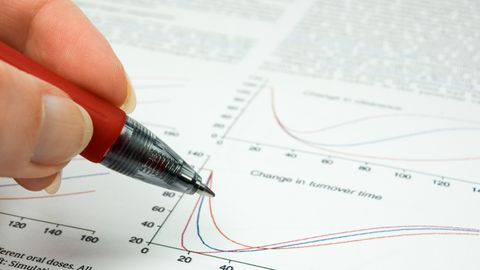Using Exercise to Inform Insulin Delivery in Patients With Type 1 Diabetes
AI and wearable fitness sensors could improve insulin delivery system performance during exercise

Complete the form below to unlock access to ALL audio articles.
Around half a billion people worldwide are diagnosed with diabetes. A study, led by Dr. Peter G. Jacobs at Oregon Health & Science University and published in The Lancet Digital Health, demonstrates the potential of integrating data from wearable fitness sensors and artificial intelligence (AI) to inform insulin delivery systems on when to deliver insulin after physical activity.
The current lack of blood glucose level regulation during exercise
Type 1 diabetes is an autoimmune disorder that results in the loss of insulin-producing beta cells in the pancreas, thereby leading to a dysregulation of blood glucose levels. Historically, diabetes has been treated through insulin injections or the use of an insulin pump. However, automated insulin delivery (AID) systems have become more popular recently as a method to release insulin, as they contain a glucose monitor that can automate insulin delivery based on the monitor’s readings and the body’s need for glucose. While AIDs have proven to be useful, they are still in need of improvement, as patients can often experience low blood sugar levels despite being under the control of an AID system. One of the main reasons for this is that there are more physiological factors to account for when a person is exercising, thereby making the response required of AIDs less predictable during these times. To approach this problem, Jacobs et al. were interested in seeing if AI could be used to analyze wrist-worn fitness monitor data, which could then be used to inform AIDs. In this study, they tested two AI algorithms: the exercise-aware model predictive control (exMPC) and the exercise-aware adaptive proportional derivative (exAPD). The exMPC has the ability to detect major changes in physical activity, such as during a run, and the exAPD has the ability to detect similar activities as well as low-intensity activity, such as household chores.
AI is effective in integrating physical activity and blood glucose information
This study was conducted at Harold Schnitzer Diabetes Health Center clinic at Oregon Health and Science University and consisted of 25 participants. All participants had been diagnosed with Type 1 diabetes for at least 1 year and were between the ages of 21 and 50. First, the patients underwent a one-week “run-in” period, in which their glucose levels were monitored but no algorithm was used to modulate AID system activity. After this period, patients started a treatment regimen with the implementation of the algorithms, in which they participated in a 76-hour session under the control of one algorithm and then another 76-hour session under the control of the other algorithm. In each session, they were first monitored in the research facility and then at their homes, in which they performed activities of daily living, such as doing laundry or washing dishes, as well as more intense physical activity, such as timed workouts, all of which was captured via the wrist-worn fitness watch. Throughout the whole study, the researchers recorded the blood glucose levels of the participants via the Dexcom G6 CGM.
The key findings of the paper were:
- There was no significant difference between participants who were under the exMPC algorithm and participants who were under the exAPD algorithm in the percent time spent below standard blood glucose range or time spent in range during the initial primary in-clinic session.
- During the 76-hour sessions where exercise was introduced, both algorithms, exMPC and exAPD, performed similarly in terms of time in range (71.2% and 75.5% respectively) and time below range (0.96% and 1.30% respectively).
- Both algorithms were better at minimizing time below range over the entirety of the trial compared to when no algorithm was used at all, which presented a time below range of 2.4%.
Using AI and wearable technology in patients with Type 1 diabetes
Current glucose-monitoring and insulin delivery systems for patients with Type 1 diabetes can be unpredictable in their response after exercise. Jacobs et al.’s findings suggest AI has the potential to improve the care of patients with Type 1 diabetes, which includes real-time monitoring of patients’ glucose levels, especially after physical activity. Both of the algorithms that were used in the study, exMPC and exAPD, show potential for integration in existing AID systems, as they both offer an enhanced ability to maintain glucose levels in range and minimize the amount of time under range. Participants experienced less time under range when monitored by one of the algorithms, compared to no algorithm at all. The results of the study indicate that the use of exercise metrics, collected via wearable technology, can be used by both exMPC and exAPD to inform insulin delivery in AIDs.
While this study presents promising results, there are limitations that should be addressed in future research. Firstly, the study size was small and the participants were monitored over a relatively short period of time. Furthermore, the exercise sessions within the clinic were limited to aerobic exercises, instead of other forms of exercise. Lastly, the study population consisted of people who normally had well-monitored glucose levels, which is not representative of all people with Type 1 diabetes.
Next steps to continue testing their model
Future research on this topic should include longitudinal studies that monitor participants over a longer period of time to understand how the implementation of the algorithms impacts their health in the long-term. For statistical power, a larger patient cohort is also required. Furthermore, future studies should utilize other types of exercise, besides solely aerobic, to account for the diversity of activities that the participants may undertake in normal life. This study has demonstrated the potential that AI has in improving current AID systems to optimize delivery of insulin to patients, particularly when they are exercising, and future research should continue to build on the foundation that this study has established.
Reference: Jacobs PG, Resalat N, Hilts W, et al. Integrating metabolic expenditure information from wearable fitness sensors into an AI-augmented automated insulin delivery system: a randomised clinical trial. Lancet Digit Health. 2023;5(9):e607-e617. doi:10.1016/S2589-7500(23)00112-7



